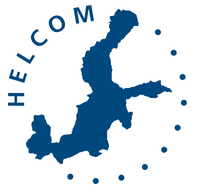Update on the HELCOM process on the Baltic Sea status as a special area
for passenger ship sewage
This week, during the HELCOM Annual 3-4 March 2015, the Contracting Parties continued to address the issue of limiting passenger ships’ sewage ending up in the Baltic Sea. The negotiations concerned various options to be able to be in a position that a joint notification by HELCOM countries could be sent to the International Maritime Organisation (IMO). The deadline for documents for the next meeting of the IMO decision making body (MEPC 68 in May 2015) is today, Friday 6 March.The notification document has the function to notify that the relevant Baltic regional ports have adequate capacity to receive passenger sewage, as this is a prerequisite for the existing IMO Special Area status on sewage for the Baltic Sea to take effect. The HELCOM Heads of Delegations considered the issue, in addition to the plenary, during two working sessions on 3 March. At that time an agreement could not be reached regarding a notification covering all the Baltic Sea countries. As the HELCOM Chair stated in the meeting, HELCOM will follow developments at IMO and also continue the technical cooperation within the Port Reception Facilities (PRF) Cooperation Platform on sewage delivery between the administrations, industry stakeholders and the civil society. Sweden – leading the drafting of the notification document – informed at the meeting to be prepared to continue to lead the drafting process to finalize the notification to MEPC 68 with the interested Contracting States. On the other hand, the Russian Federation informed of the need to be aware of the shipping companies’ policy regarding the implementation of the more stringent standards for sewage treatment, whether they have plans in place to install new or upgrade existing sewage treatment plants on their passenger ships. The Russian delegation urged for a complex economic assessment of the consequences of the enforcement of the Special Area status.All Contracting Parties informed in HELCOM that their reception facilities in relevant passenger ports are adequate. BackgroundIn July 2011, a milestone in Baltic protection was reached when IMO decided to establish the Baltic Sea as a special area for sewage from passenger ships, by amending the Annex IV of the MARPOL Convention. The resolution was the culmination of long negotiations among HELCOM countries, resulting in a joint HELCOM application of such a status to the IMO.The amendments by IMO concerning the Baltic Sea, as described above, entered into force on 1 January 2013. Since this date the Baltic Sea is thus already de jure a Special Area for sewage.However, the effective application of this already existing legal status is subject to the availability of adequate sewage Port Reception Facilities (PRF) in the region. The adequacy of sewage PRF has to be separately notified to IMO MEPC and this can be done jointly or individually by the coastal countries. The dates of the enforcement of the 2011 IMO resolution are an unfinished topic. According to the 2011 resolution, discharge of sewage from passenger ships within a special area would be prohibited from 1 January 2016 onwards for new passenger ships, and from 1 January 2018 for existing passenger ships. These dates cannot be met any longer. The new dates discussed are 1 June 2019 and 1 June 2021, respectively.Port reception facilities have been on HELCOM agenda since long. Its first Recommendation 1/1 from 1980 was about measures to ensure the use of reception facilities for wastes from ships.This
week, HELCOM has also on port reception facilities on 5 March 2015 at the “Pan European Dialogue between cruise operators, ports and coastal tourism stakeholders”. * * *Note for editorsThe Baltic Marine Environment Protection Commission, usually referred to as,
is an intergovernmental organization of the nine Baltic Sea coastal
countries and the European Union working to protect the marine
environment of the Baltic Sea from all sources of pollution and to
ensure safety of navigation in the region. Since 1974, HELCOM has been
the governing body of the ‘Convention on the Protection of the Marine
Environment of the Baltic Sea Area’, more commonly known as the Helsinki
Convention. * * *For more information, please contact:
Hermanni BackerProfessional Secretary for
Maritime, Response and Maritime Spatial PlanningHELCOMTel: +358 46 8509199Skype: helcom02E-mail:
hermanni.backer(at)helcom.fi
Johanna LaurilaInformation SecretaryHELCOMTel: +358 40 523 8988Skype: helcom70E-mail: johanna.laurila(at)helcom.fi
Update on the HELCOM process on the Baltic Sea status as a special area for passenger ship sewage
